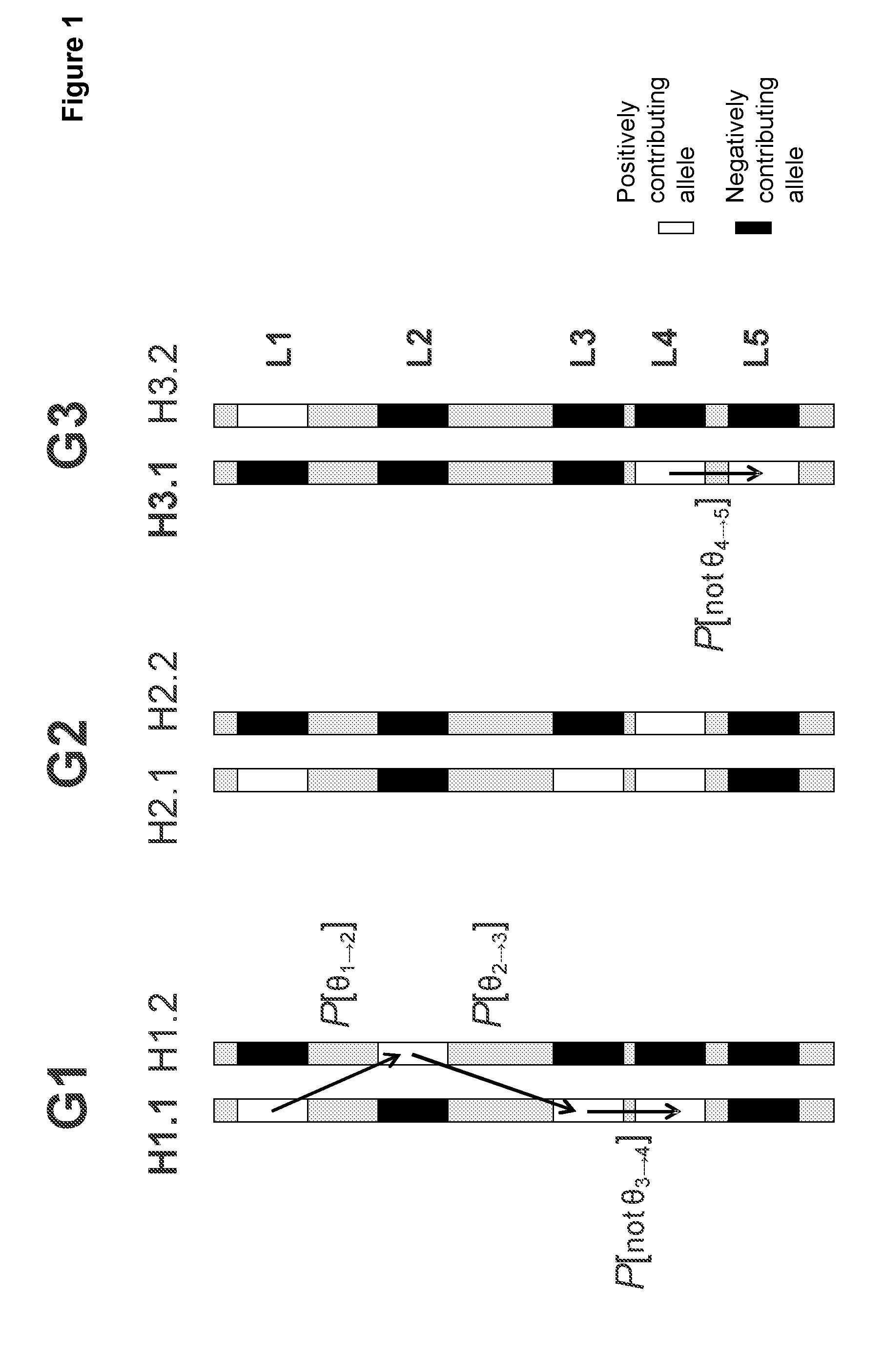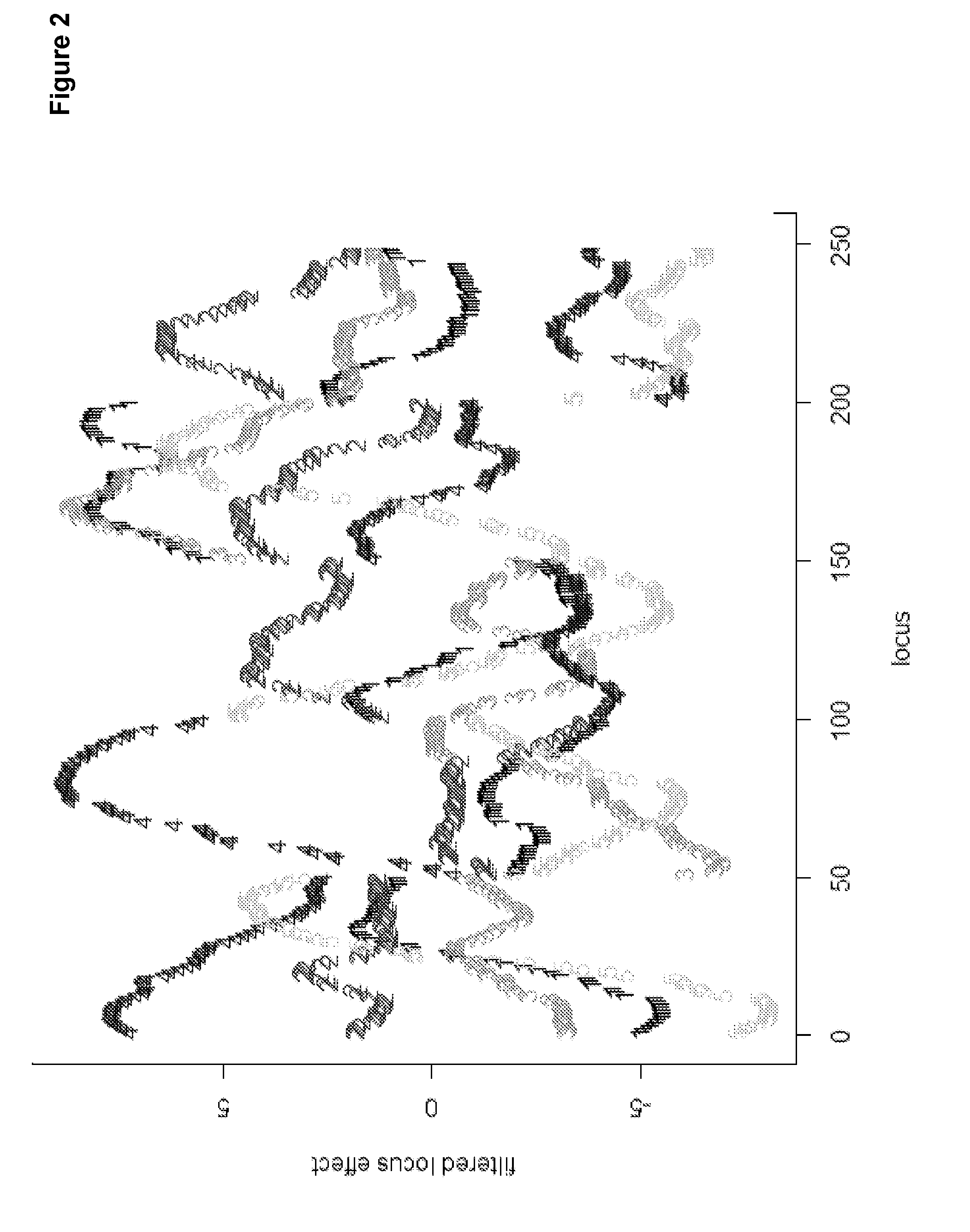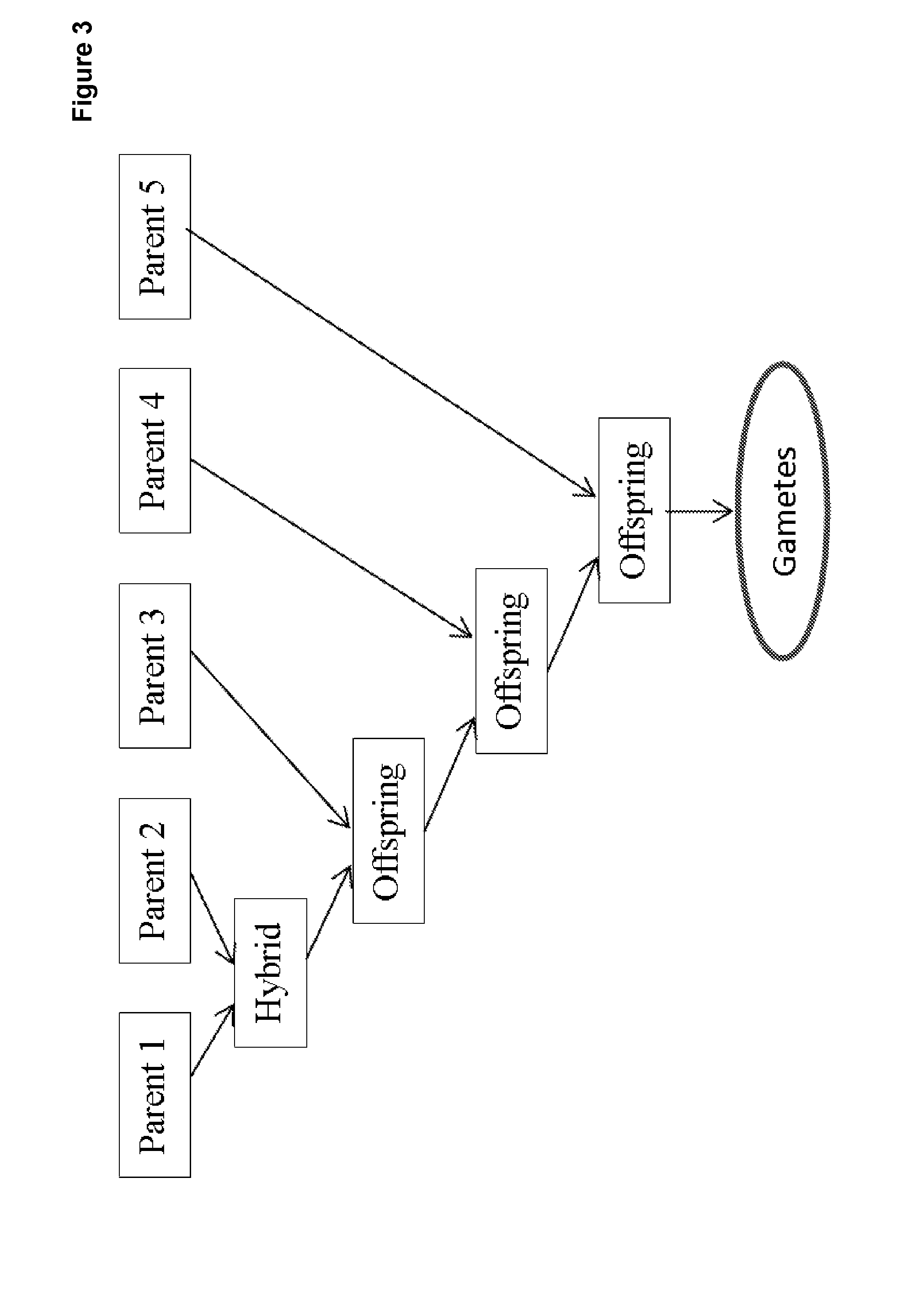Directed strategies for improving phenotypic traits
a phenotypic trait and directed strategy technology, applied in the direction of biochemistry apparatus and processes, instruments, library member identification, etc., can solve the problems of future improvement of the genotype and the performance of the parents that cannot adequately predict their mutually combined ability
- Summary
- Abstract
- Description
- Claims
- Application Information
AI Technical Summary
Benefits of technology
Problems solved by technology
Method used
Image
Examples
example 1
Arabidopsis thaliana
[0127]A public genotype data set of the model organism Arabidopsis thaliana (At) was retrieved, consisting of genotype data for 250K loci of 1179 ecotypes (Horton et al., 2012). Simulated (i.e. attributed) allele substitution effects were genomewide randomly distributed over 500-2000 loci. The At lines are divided uniformly at random in a training set of 50-1000 parents, which are used to construct GS models, and a validation set (for determining the accuracy) consisting of the remaining parents. The tests were done selecting either the 99% or 100% best ranking combinations and following 2-5 breeding cycles. Each parameter (i.e. number of loci, number of parents in the training set, selecting percentage, and the number of breeding cycles) combination was repeated 200 times.
[0128]One of the presumptions of the dirGWS strategy is the availability of reasonably accurate GEBVs. This accuracy is dependent on GS model construction methodology and on training data set ...
example 2
Maize
[0130]A similar test as was done in Arabidopsis was performed using a Maize (Zea mais) genotype data for 106 loci of 368 lines (Li et al., 2013). Traits were simulated by assigning allele substitution effects to 258-2015 loci. Training sets of 50-200 training parents were randomly selected. Further test procedures were similar as in the Arabidopsis example.
[0131]Test results, wherein the training population serves as breeding population, shown in FIG. 6, indicate again that for most parameter combinations, the selection results are better when following the dirGS strategy, in particular when more than 2 parents are involved. The accuracy has a less dramatic effect on the overperformance of the dirGS strategy than in the previous example.
example 3
Cucumber
[0132]A third test was conducted using Cucumber (Cucumis sativus) genotype data for 3.7*106 loci of 115 lines (Qi et al., 2013). The set was reduced to the homozygous marker subset with no missing data (179K markers) and 86 non-identical parent lines. Trait effects were simulated on 450-1789 loci traits. GS models were constructed on training populations of 50 training parents. Further test procedures were similar as in the previous two examples.
[0133]By the nature of this dataset, which contains a relative low amount of lines, it was not possible to construct very accurate models, so results were obtained for the accuracy range (0.55>R<0.67) only. Again, using the training population as breeding population, we observed an improved performance when following the dirGS strategy for most cases, and even within this rather narrow range, we observed a modest impact of model accuracy (more overperformance of dirGS is found when the accuracy is higher), see FIG. 7.
PUM
| Property | Measurement | Unit |
|---|---|---|
| genetic distances | aaaaa | aaaaa |
| sizes | aaaaa | aaaaa |
| density | aaaaa | aaaaa |
Abstract
Description
Claims
Application Information
 Login to View More
Login to View More - R&D
- Intellectual Property
- Life Sciences
- Materials
- Tech Scout
- Unparalleled Data Quality
- Higher Quality Content
- 60% Fewer Hallucinations
Browse by: Latest US Patents, China's latest patents, Technical Efficacy Thesaurus, Application Domain, Technology Topic, Popular Technical Reports.
© 2025 PatSnap. All rights reserved.Legal|Privacy policy|Modern Slavery Act Transparency Statement|Sitemap|About US| Contact US: help@patsnap.com



